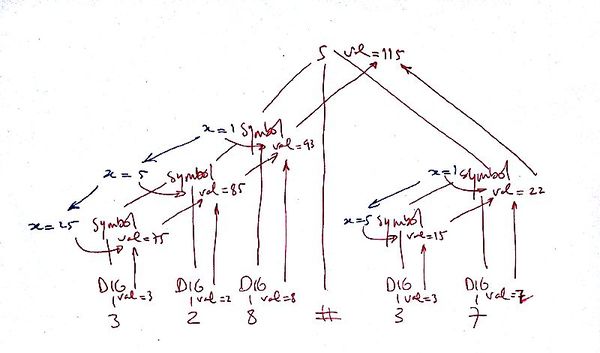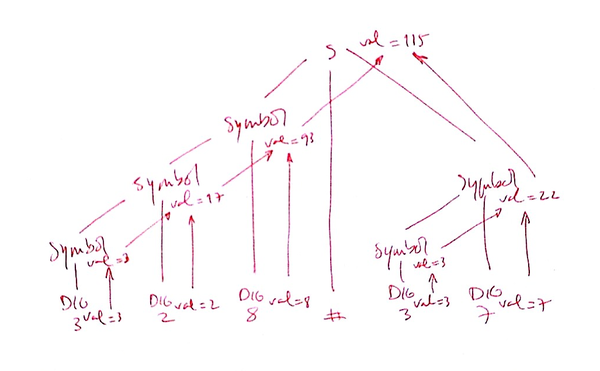Attribute Grammars/Exercise 2: Numbers
From Wiki**3
Considere a seguinte gramática atributiva:
| s | → | symbol 1 # symbol 2 | { | |
| s. val = symbol 1. val + symbol 2. val | ||||
| symbol 1. x = 1 | ||||
| symbol 2. x = 1 | ||||
| } | ||||
| symbol 1 | → | symbol 2 dig | { | |
| symbol 2. x = symbol 1. x * 5 | ||||
| symbol 1.val = symbol 2.val + dig.val * symbol 1.x | ||||
| } | ||||
| symbol | → | dig | { | |
| symbol.val = dig.val * symbol.x | ||||
| } |
O elemento lexical dig representa um dígito de 0 a 9, e o seu atributo val representa o valor numérico correspondente.
- Represente a àrvore semântica para a entrada 328#37.
- Apresente uma gramática atributiva equivalente que apenas contenha atributos sintetizados.
Solution
Semantic tree and dependency graph
"x" is an inherited attribute (propagation in blue); "val" is a synthesized attribute (propagation in red).
Attribute grammar using only synthesized attributes
We start by noting that the semantic computed by the previous grammar corresponds to base 5-like numbering (although the digits do not belong to base 5).
The new grammar is trivial to write (_1 and _2 are subscripts to differentiate instances of "symbol"):
s → symbol_1 # symbol_2 { s.val = symbol_1.val + symbol_2.val }
symbol_1 → symbol_2 dig { symbol_1.val = symbol_2.val * 5 + dig.val }
symbol → dig { symbol.val = dig.val }
"val" is a synthesized attribute (propagation in red).

